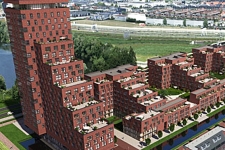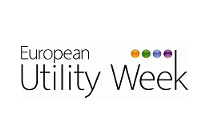In Operation Operation
Current PowerMatcher™ implementations can be also be found on the Flexiblepower Alliance Network

REFERENCE PROJECTS IN OPERATION
PowerMatching City
Location: Hoogkerk, The Netherlands

In 2010 the PowerMatcher™ technology was implemented in Hoogkerk. The goal was to show that the technology not only worked during tests in a laboratory environment but also in real-life. 25 household were selected and outfitted with several intelligent devices such as smart washing machines, heat-pumps, solar panels and micro-CHP’s. The results showed that consumers can and will change their energy usage profile to benefit from lower energy prices when local power is abundant. Connecting devices and coordinating energy demands resulted in a lower peak in the grid and it significantly reduced the difference in supply and demand in the neighborhood. Another significant result was the insight that the technology was not yet ready for large scale deployment at that time. Particularly the installation and configuration of devices and the connection to the local market were complex and time consuming.
Matrix V
Location: Amsterdam, The Netherlands

Late in 2011 the PowerMatcher™ technology was installed in an office building housing around 15 companies. The PowerMatcher™ technology was used to coordinate the energy production of PV on the rooftop with the energy demand of dishwashers and fridges in the coffee corners of the building. Goal was to determine if connecting existing appliances in office buildings to the smart grid was economically viable. The results showed that refitting existing appliances by adding switches and sensors to the mains plug of a regular appliance can be beneficial. However the benefits are bigger when using smart appliances where the technology is integrated. The reason is not only the higher cost of having additional equipment with which you can only switch on and off, but mainly the need for energy related information from the device itself. That information is usually available in smart appliances.
Couperus
Location: the Hague, The Netherlands

In 2012 a new complex with 300 apartments has been outfitted with heat-pumps. The PowerMatcher™ technology helps to coordinate the energy use of these heat-pumps in order to reduce peak loads and differences in supply and demand. For the end users, the system should lead to a lower energy bill, without reducing customer comfort or freedom.
FAN REFERENCE PROJECTS IN DEVELOPMENT
PowerMatching City II
Location: Groningen, The Netherlands

PMCII is the follow up to PowerMatching City. The project started in May 2013 and more than doubles the number of household to around 60. The focus is less on the technological side but more on energy services and energy markets. The project will test how different personal goals of end-users have different types of impact on the local energy system. Some households will aim to minimize their energy costs, by buying when energy is cheap and selling when energy is expensive. Others will aim to minimize their interaction with the outside by using locally available energy as much as possible.
##Ecogrid Location: Bornholm

The EU funded research project Ecogrid started in 2011 and will coordinate the energy demands of 2.000 households on the island of Bornholm (Denmark) with local production by wind turbines. Without added intelligence, the high penetration of renewable energy (>50%) on the island causes critical usage of the existing grid-transport capacity and may result in difficult if not impossible balancing of supply and demand. The participants will be equipped with residential smart devices using gateways and “smart� controllers. Installation of the solutions allows for real-time prices to be communicated to consumers and allows users to configure their automatic demand-response preferences, e.g. through different types of electricity price contracts. “Automation� and customer choice is one of the key elements in this project.
##Smart Grid Pilot Heerhugowaard Location: Heerhugowaard, The Netherlands

One of the projects of the Smart Energy Collective (SEC) is located in the city of Heerhugowaard, more specifically, in a 10 year old neighborhood. Most of the 3.000 households have solar panels on their roofs. The remaining electricity demand is produced by a wind turbine. The project aims to install PowerMatcher™â„¢ technology in 300-500 households in 2014, with the addition of a number of microCHP’s, electric vehicles, heat-pumps and smart appliances. The project will evaluate several customer value propositions regarding energy flexibility. The goal is to determine if the interaction of gas and electricity can be used to optimize a local energy market, by using spare capacity in the gas grid to reduce peak loads in the power grid.
##Lochem Energy Location: Lochem

Lochem Energy is a smart energy initiative in an existing grid. It is the result of a user initiative to start a local energy cooperative by households to reduce their energy consumption and produce a larger part of their energy needs locally. The aim is to have a total of 1MW of PV systems at multiple locations to serve 250 customers, without any investments in new grid capacity.
Partners are Locamation (coordinator), Lochem Energie, Universiteit Twente, Eaton Industries, Trianel and Alliander.
Houthaven
Location: Amsterdam

The Houthaven project is part of the European NEXT-building program, in which a new generation of “low energy buildings” with smart technologies are tested in Amsterdam, Lyon and Helsingborg. Houthaven is an old harbor area which will be redeveloped. Once redeveloped, it will consist of 2.000 households and 40.000 m2 of commercial property (schools, offices andshops). The harbor areashould become climate neutral.
Partners are Alliander, KEMA, city of Amsterdam, University of Kassel, University of Amsterdam, Ecole polytechnique de Lausanne, COWI a/s, Helsinborgshem, SPLA Lyon confluence, hespul, BKAB Boende Komfort and VOF Houthaven.
FAN R&D PROJECTS
VIOS
Funding: Dutch TopSector (TKI Switch2SmartGrids)
The Virtual Infrastructure Operating System (VIOS) project is aimed at the seamless connection of appliances to different smart market developments (USEF, OpenADR/Oasis, SEDC,..). Most smart market implementation are not designed to interact with each other, making it difficult to commercialize standardized smart appliances. VIOS creates this standard on the level of a virtual infrastructure, where a definition of connectivity makes it possible for both service developers and equipment manufacturers to optimize their part of the value chain. The project will show in practice how different types and brands of appliances can be coordinated uniformly by the same service. The concepts and designs are direct input for the FAN standard developments.
Partners are Alliander, TNO, Technolution and iNRG.
Energy Supply Cooperative (ESC)
Funding: EIT KIC InnoEnergy
The project Energy Supply Cooperative (ESC) is aimed at developing energy-autarkic, environmentally friendly residential quarters. A large part of the required energy will be provided by photovoltaic systems within the quarters, the energy consumption is reduced to a minimum by modern passive house technology. A maximal self-usage of photovoltaic energy is achieved by heat pumps with hot water storages and intelligent load shifting within the quarter. Additionally, socio-economic effects of energy consumption are analysed and opportunities for load reduction and shifting are derived. Electricity that cannot be covered by own production is obtained from an external energy supplier. In the micro-grid, an intelligent energy management using PowerMatcher™ ensures the optimal interaction between local energy supply and demand. In the end, the aimed innovations shall remain affordable for households with average incomes.
Partners: Evohaus, KIT and TNO
Hybrid Energy Grid Management (Hegrid)
Funding: EIT KIC ICT labs
Hybrid Energy Grid Management (HEGRID) focuses on realizing a prototype multi-commodity (electricity, gas and thermal energy) energy management framework. This framework enables interoperability of a variety of energy management approaches and devices. The basis of HEGRID will be formed by the Open Energy Management Framework: an operational platform that supports multiple smart grid approaches for the electric grid. This base platform will be extended to support gas and thermal grids as well. It will also feature a coordination mechanism that can make intelligent decisions across commodities (e.g. how to make the best use of a CHP that uses gas to produce heat and electricity). Multi-commodity energy management is largely unexplored territory, but is an important step to increase the efficiency, flexibility and stability of the combined grids. The project addresses essential challenges posed by the “Energy transition” to incorporate more energy generated from renewable sources.
Partners: Alliander, Centrum Wiskunde & Informatica (CWI), Eindhoven University of Technology (TU/e), Karlsruher Institut für Technologie (KIT), Siemens, Universiteit Twente, Technical Research Centre of Finland (VTT) and Toegepast Natuurwetenschappelijk Onderzoek (TNO).





